Last updated: October 7, 2024
Article
Lagerstätten
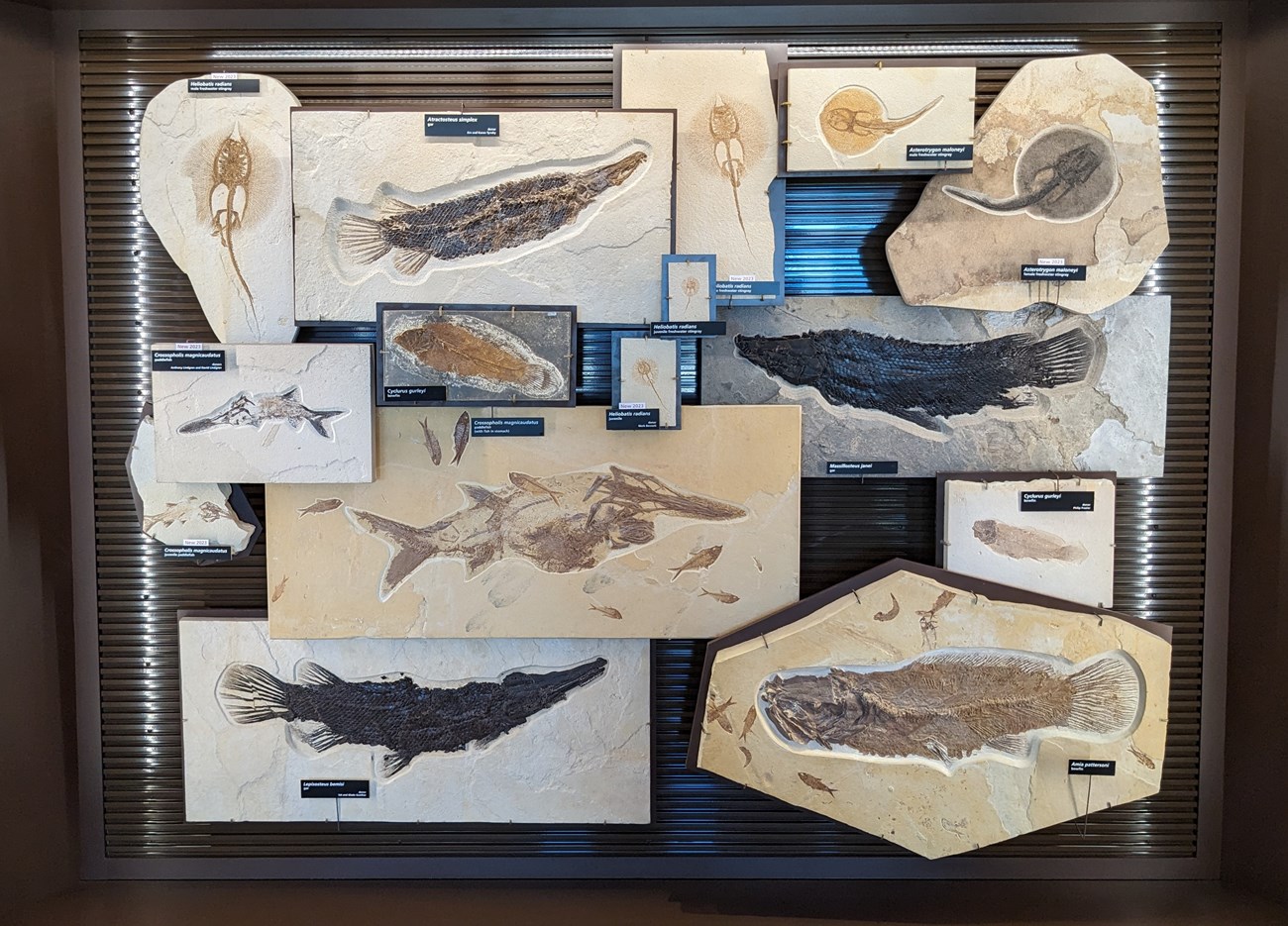
Introduction
Fossil Lagerstätten are exceptionally rich fossil deposits. The term was coined for these rare paleontological sites in 1970 and is derived from the German words for “storage” and “place.”
The National Park System contains four concentration Lagerstätten and four conservation Lagerstätten, with an additional conservation Lagerstätten located near Chickasaw National Recreation Area.
Three additional concentration Lagerstätten have been designated as National Natural Landmarks, one of which is also a conservation Lagerstätte. One conservation Lagerstätte is a National Historic Landmark.
Concentration Lagerstätten
Agate Fossil Beds National Monument


Left image
Diorama in the Agate Fossil Beds National Monument Visitor Center using fossil casts to represent the scene at the dried up watering hole showing predators and scavengers (Daeodon and Daphoenodon) confronting three living and one dead Moropus.
The most common bones at University and Carnegie Hills, the main sites excavated in the early 1900s, were those of Menoceras (a small rhino). The jumble of disarticulated bones indicate that they had been extensively scavenged, including by the pig-like Daeodon and by Daphoenodon (bear dogs). Bones from about 20 Moropus, a distant relative of the horse with long front legs and short back legs and claw-like hooves, have also been recovered.
The Stenomylus Quarry is a separate fossil location in the park where more than 100 articulated specimens of Stenomylus, a diminutive gazelle-like camel, have been recovered.
University and Carnegie Hills are in the Anderson Ranch Formation and the Stenomylus Quarry is slightly older and is the Harrison Formation. The University and Carnegie Hills bone bed is in strata underneath a 19.2 million year old ash bed and the Stenomylus Quarry is slightly older and is the Harrison Formation below a 21-million-year-old ash bed.
Learn More
-
ttps://www.nps.gov/agfo/learn/nature/fossils-and-paleontology.htm
-
Link to Type Section page
Dinosaur National Monument, Quarry Exhibit Hall
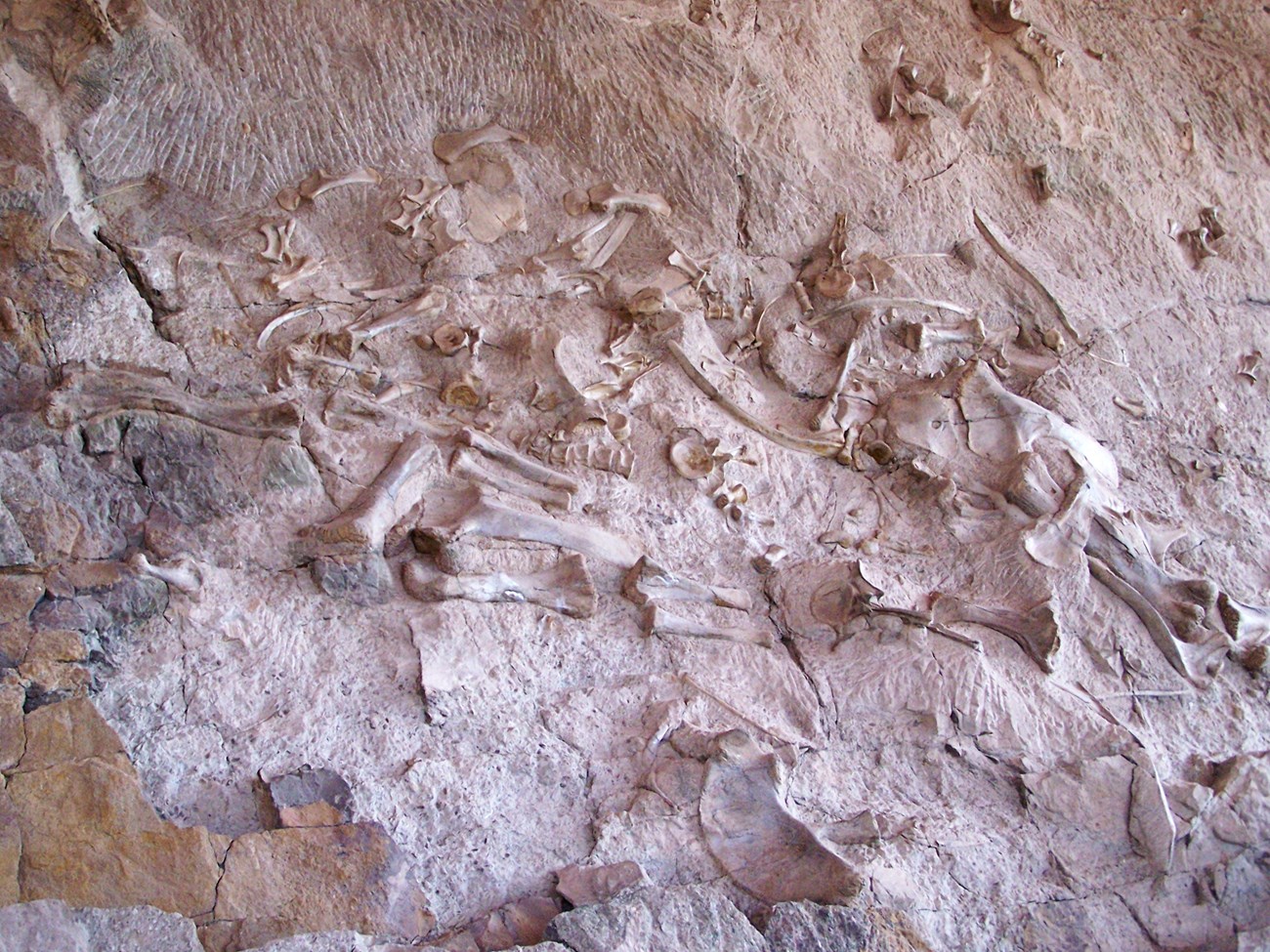
The fossils are in the Quarry Sandstone Bed of the Brushy Basin Member of the Jurassic Morrison Formation, and are approximately 150 million years old. The great concentration of bones were deposited at a bend or on a sandbar along an ancient river bed where debris accumulated. The dinosaurs probably died at different times during periods of drought along the river shoreline or on the dried-out riverbed. Many of the skeletons are disarticulated and some bones have signs of scavenging like tooth marks.
Learn More
Hagerman Fossil Beds National Monument
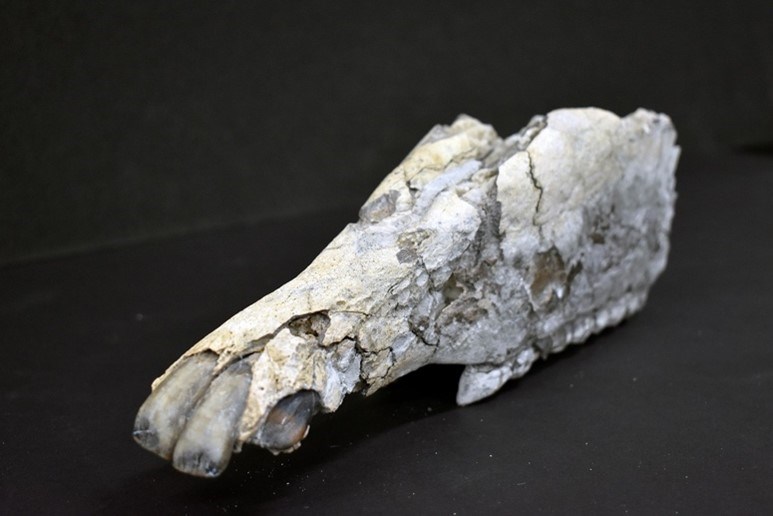
During the 1930s, five nearly complete skeletons, more than 100 skulls, and a large number of isolated bones of the Hagerman horse were excavated from the Horse Quarry in Hagerman Fossil Beds National Monument in Idaho. The Hagerman horse is more closely related to zebras than modern domesticated horses. It lived in North America during the Pliocene, between about 4 and 3 million years ago.
Individual horses recovered from the quarry range from yearlings to adults. It is thought that the animals either died while crossing a flooded river or during a period of drought.
The monument on the whole is one of the richest Pliocene fossil sites in the world, and has yielded more than 140 species to date.
Learn More
-
Park Paleontology News—The Importance of Paleontology Collections
-
Park Paleontology News—The Hagerman Horse (Equus simplicidens)
Waco Mammoth National Monument

Learn More
Conservation Lagerstätten
Buckhorn Asphalt Quarry (near Chickasaw National Recreation Area)
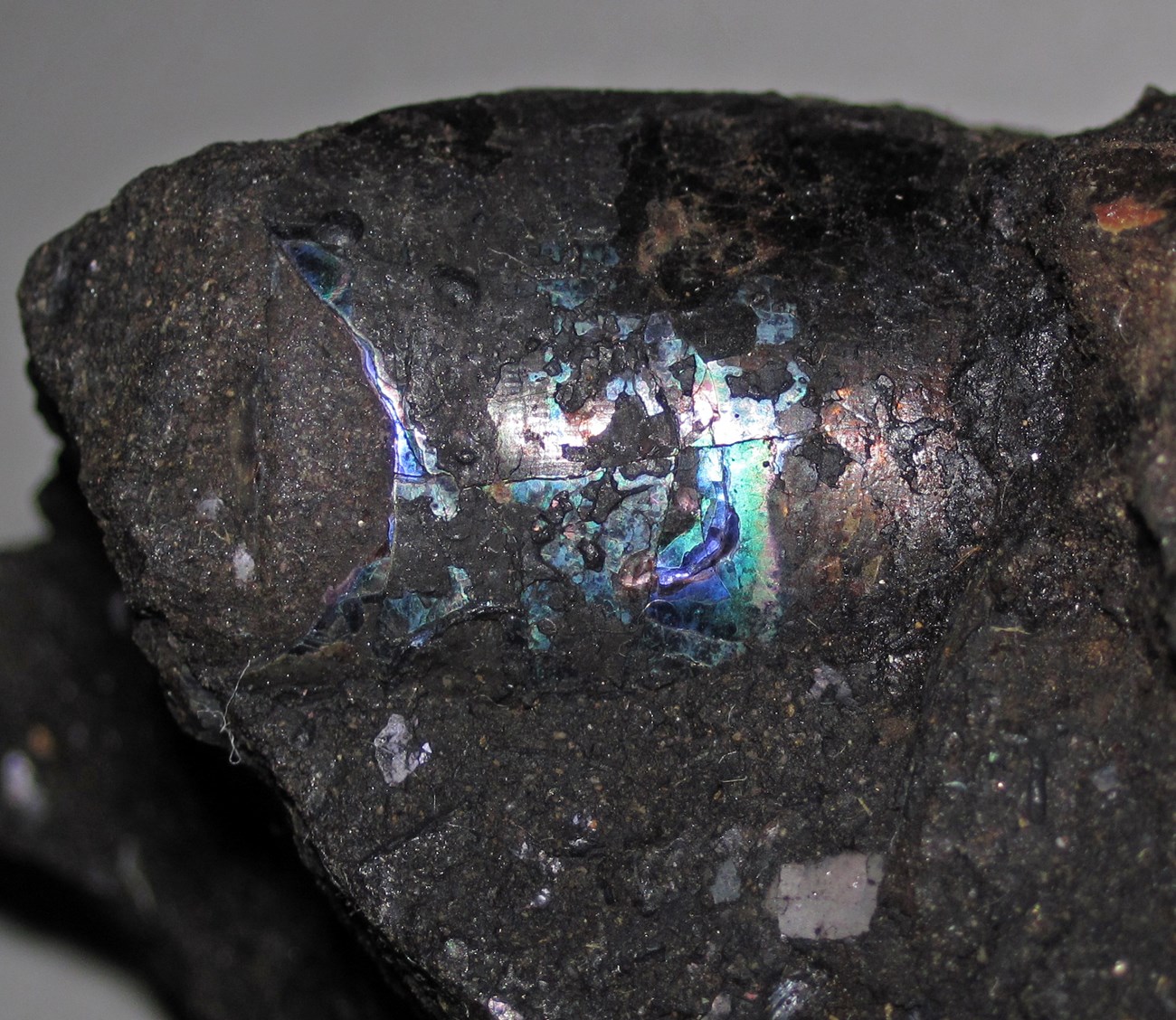
Photo by James St. John.
This Lagerstätte has the best preserved Paleozoic mollusk fauna in the world and contains the oldest known aragonite shells with nacreous luster. It is in the Pennsylvanian Deese Group and has fossils of more than 150 species, mostly of mollusks.
For further information
-
Tweet, J. S., V. L. Santucci, and T. Connors. 2015. Paleontological resource inventory and monitoring: Southern Plains Network. Natural Resource Report NPS/SOPN/NRR—2015/971. National Park Service, Fort Collins, Colorado.—[IRMA Portal]
Florissant Fossil Beds National Monument
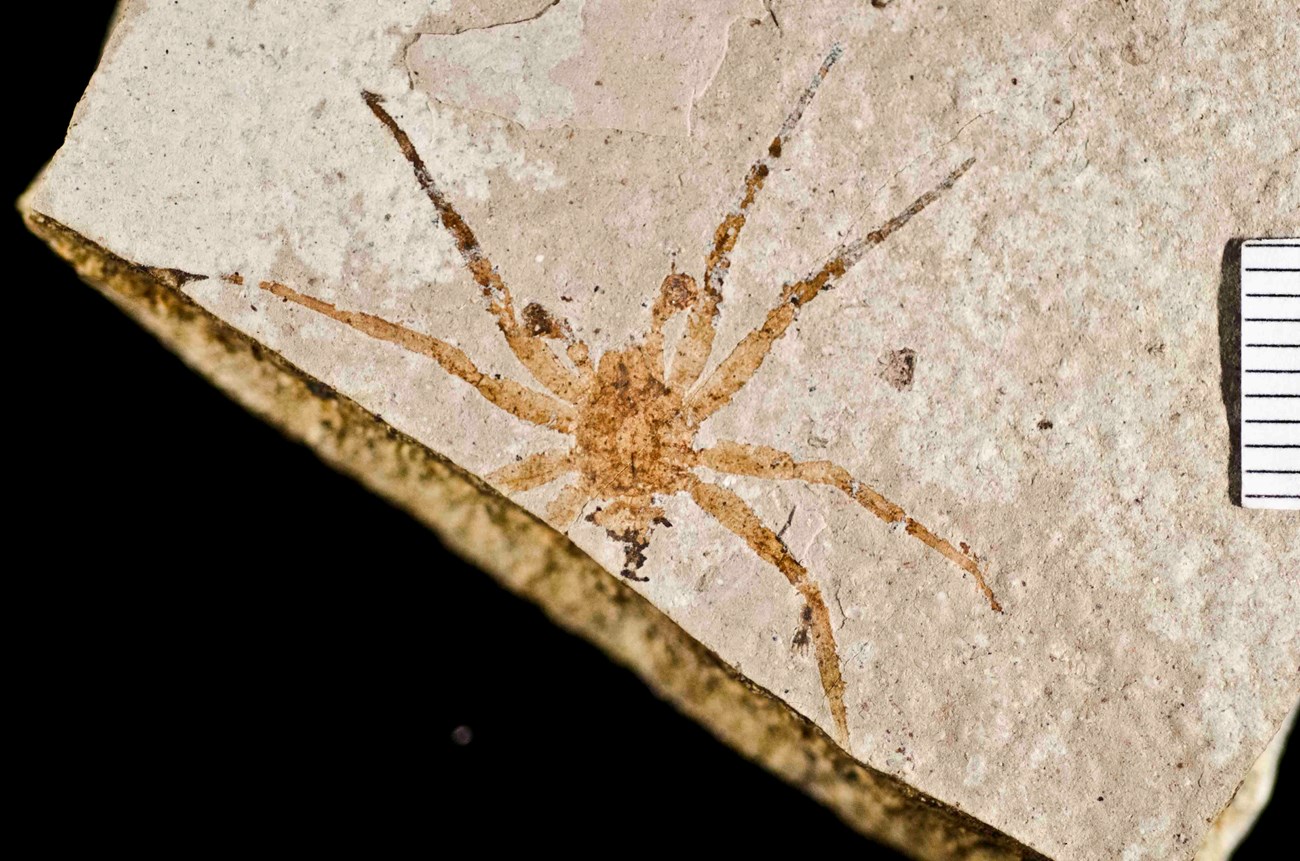
NPS photo.
The quality of the fossil preservation results from the unusual conditions of Lake Florissant, which was formed by the damming of a river system by a volcanic mudflow. The lake experienced blooms of microscopic diatoms after silica-rich volcanic ash was washed into it. After the diatoms died, their tests (shells) fell to the lake bottom, helping protect organisms and organic material from decay and sealing the thin shale layers containing the fossil impressions and compressions. Alternating shale and diatom layers record many such cycles of sedimentation and preservation in Lake Florissant.
Learn More
-
-
Link to Type Specimen page
Fossil Butte National Monument
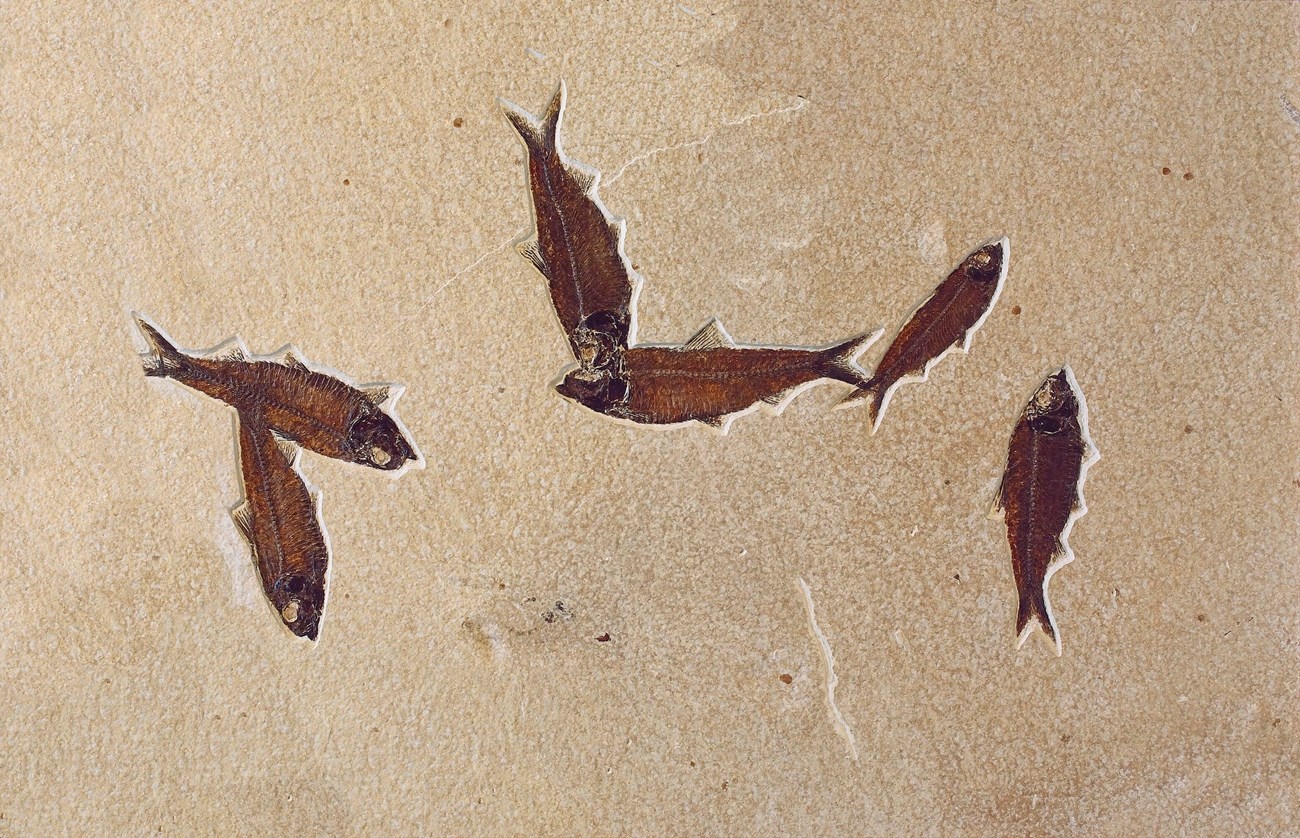
The Fossil Butte Member was deposited in a lacustrine (lake) environment, but it had a different type of tectonic and geologic environment than that of Lake Florissant. Instead of a lake formed by volcanic activity, Fossil Lake was a shallow alkaline lake in a tectonic basin formed by downwarping of the crust in southwest Wyoming during the Laramide Orogeny. The chemistry of the lake played a key role in fossil preservation. A layer of oxygen-poor saltwater present near the lake bottom prevented decay and scavenging. Additionally, a microbial mat that encased dead organisms near the lake bottom also played an important role in creating the conditions that led to the exceptional preservation of Fossil Butte’s fossils.
Learn More
-
Link to Type Specimen page
Glacier National Park
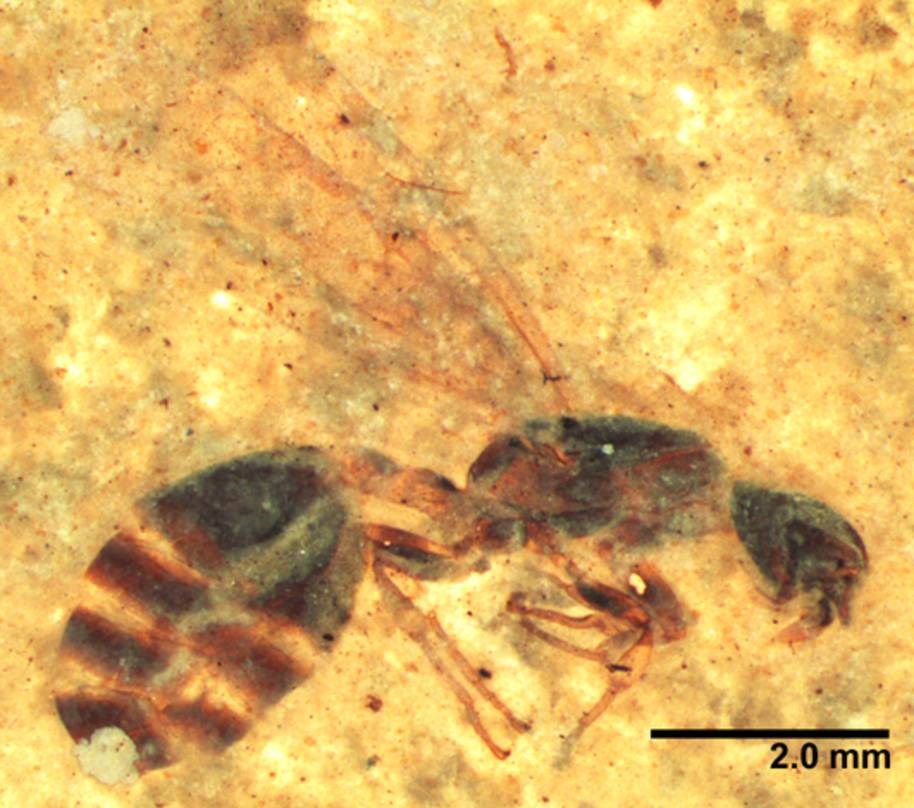
https://www.antweb.org/. Creative Commons Attribution 4.0 International.
The Kishenehn Formation, exposed along the Flathead River along the boundary of Glacier National Park, contains a conservation Lagerstätte that has been scientifically described more recently than the other Lagerstätten in national park sites. The Eocene Kishenehn Formation has long been known to contain fossil gastropods, but it has only been since the 1980s that the exceptionally well-preserved fossil insects have been scientifically known.
The insect fossils are mostly of flies, midges, mosquitoes, and water boatman, and are generally very small, usually no more than a few millimeters in length. They are found in oil shales as compressions and impressions, some with color preservations. The oil shales in the Kishenehn Formation are varves, which are very thin layers deposited annually, consisting of a organic-rich layer and a sediment-rich layer. The fossils are in the organic-rich layers, which are interpreted as resulting from spring-time algal blooms on the surface of shallow water or swampy areas. After insects became trapped in them, the growing mats protected them from decompositions before they sank and were buried by sediment.
John Day Fossil Beds National Monument
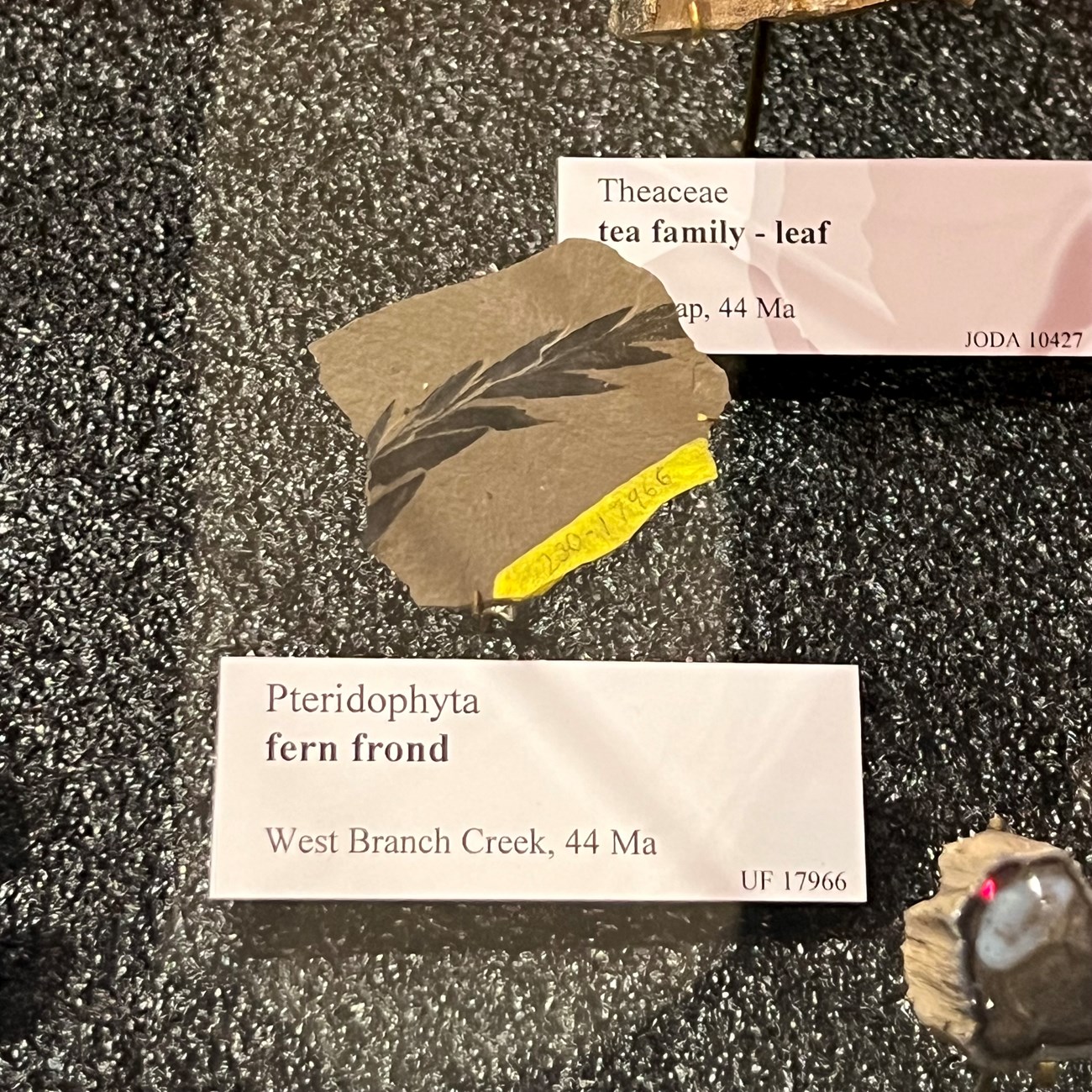
NPS photo.
The Clarno Nut Beds have not only a great diversity of fossil species, but it also contains fossils of plant parts like seeds, fruits, and nuts that are rarely fossilized. The Clarno Formation contains much volcanic ash, providing a ready source of silica that helped preserve this record of semitropical forests that grew in central Oregon during the Eocene.
Learn More
National Natural Landmark and National Historic Landmark Lagerstätten
Ashfall Fossil Beds National Natural Landmark
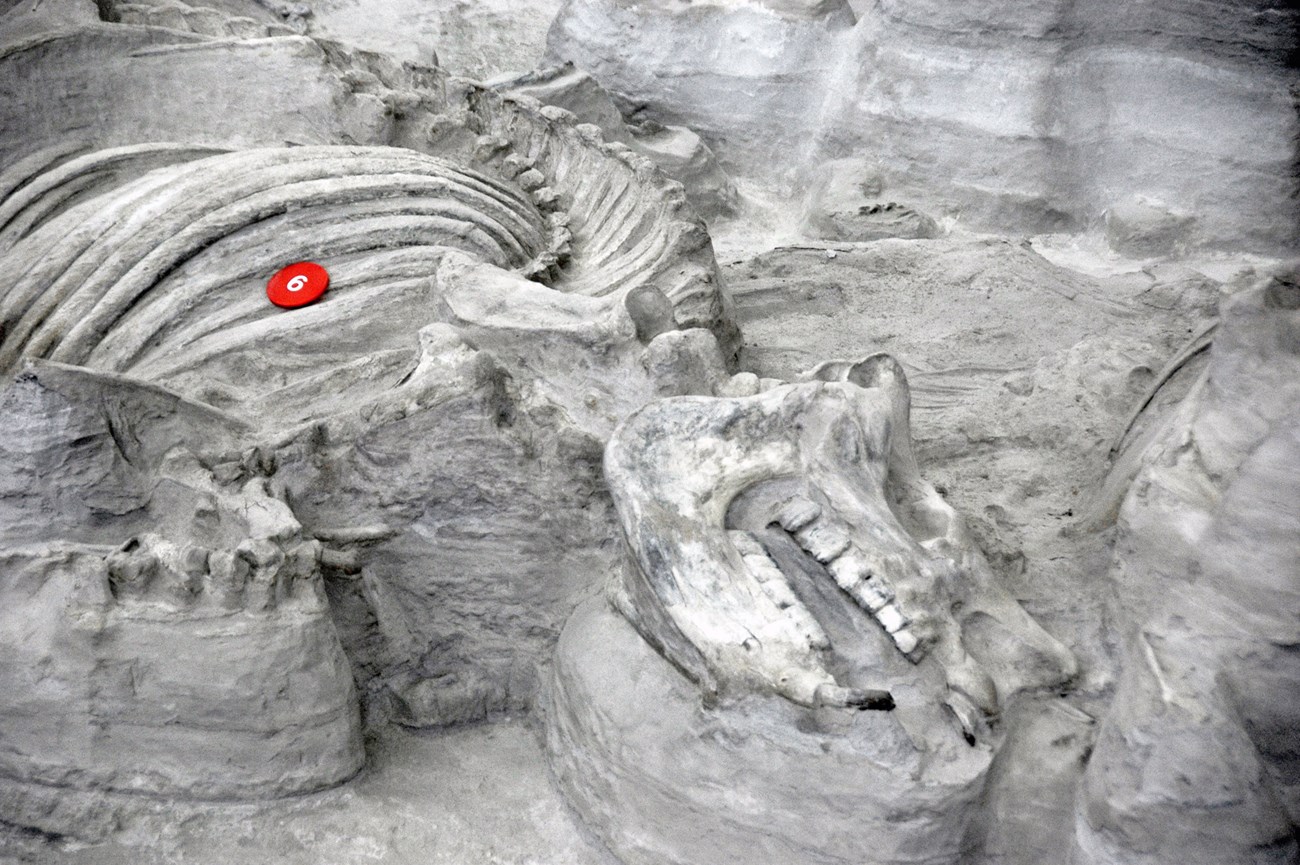
Photo by James St. John.
Smaller animals were killed first by ash fallout, followed by successively larger animals with the skeletons of more than 100 rhinos present near the top of the deposit where they had congregated around a waterhole, perishing from the effects of ash inhalation.
More than 20 species of animals have been recovered from the site, and research is ongoing. The public can view exposed part of the bonebed in the Hubbard Rhino Barn.
Learn More
- National Natural Landmarks Program
- Park Paleontology News—Paleontology of Ashfall Fossil Beds National Natural Landmark
- Ashfall Fossil Beds
Mammoth Site Of Hot Springs National Natural Landmark
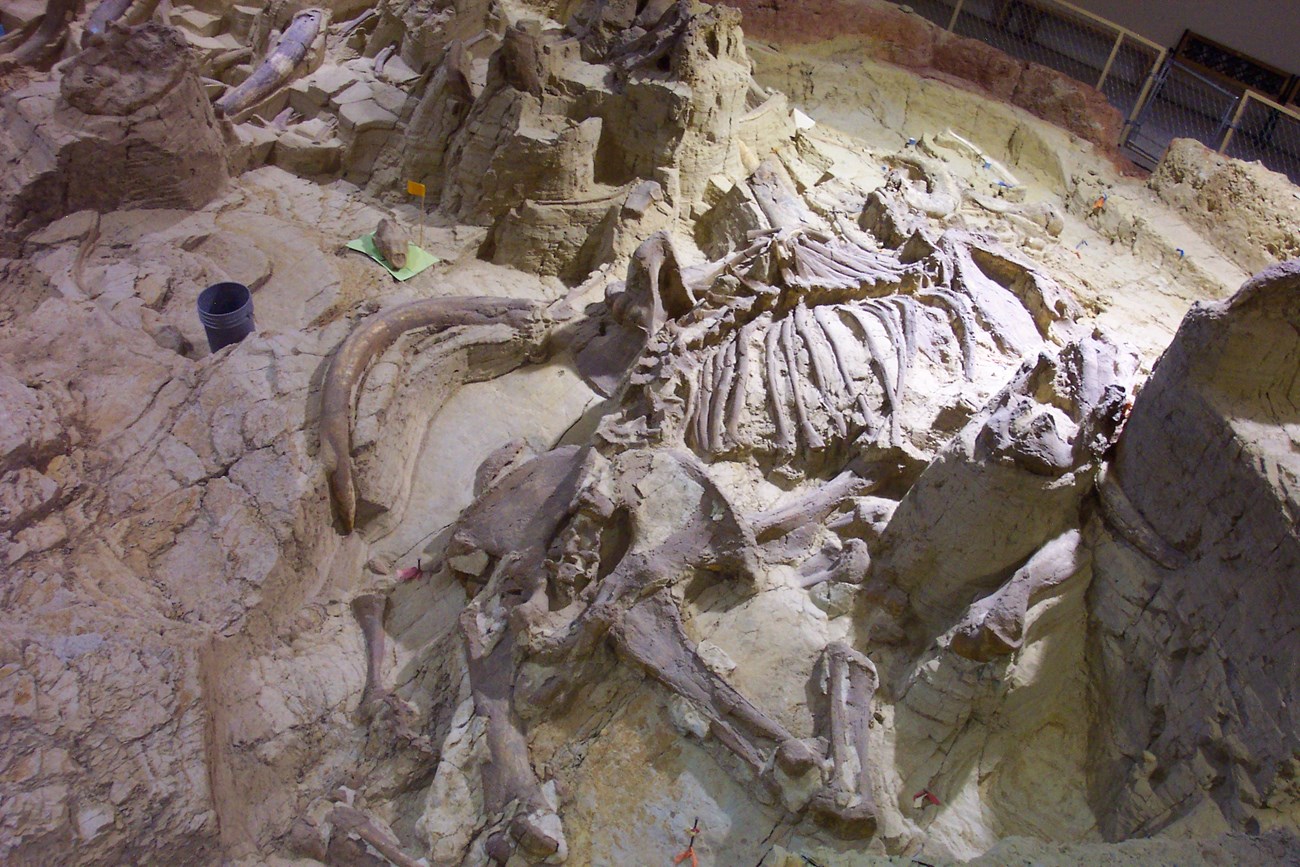
Wikimedia commons.
Learn More
Mazon Creek Fossil Beds National Historic Landmark
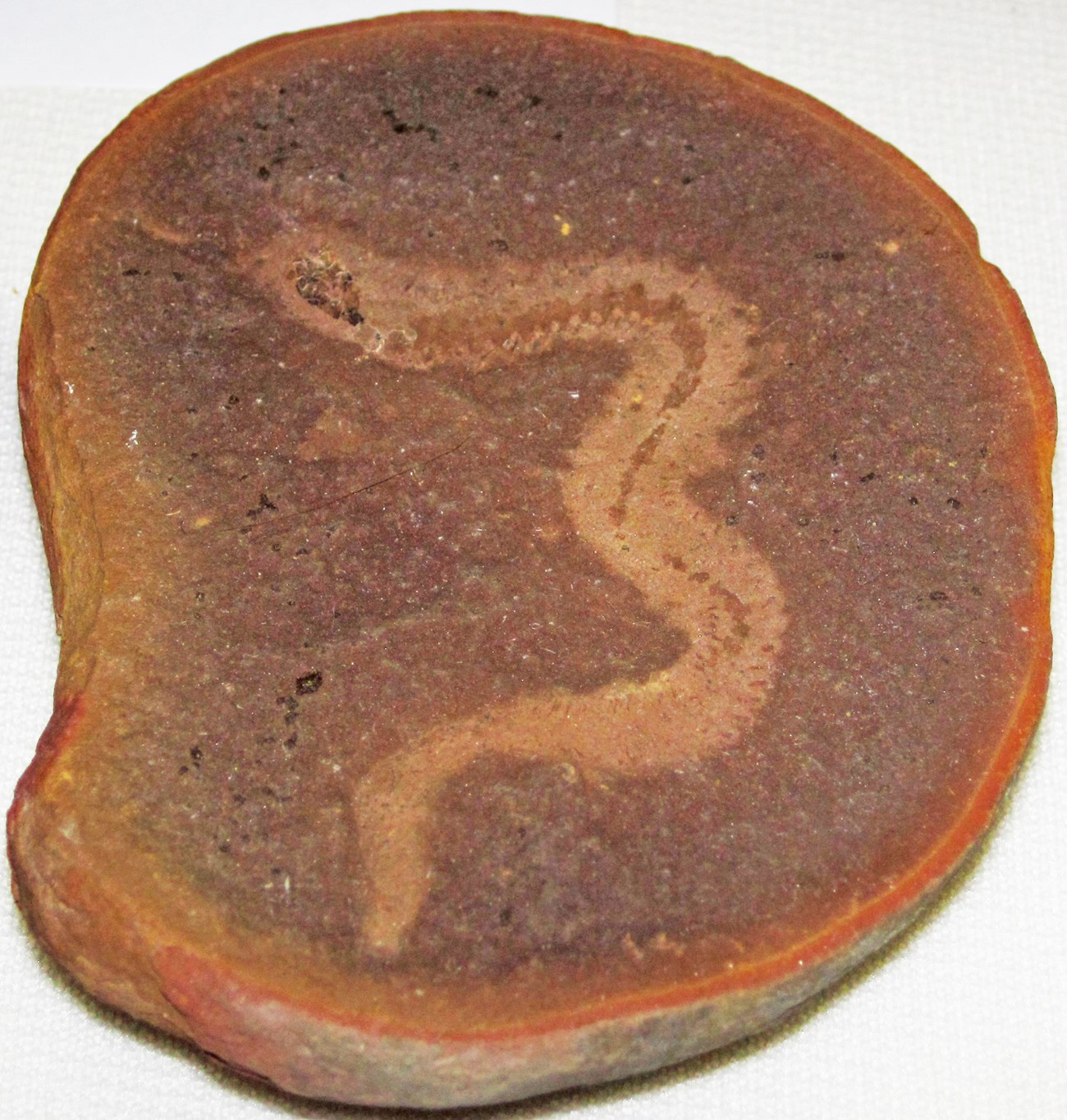
Photo by James St. John.
Learn More
Rancho La Brea National Natural Landmark
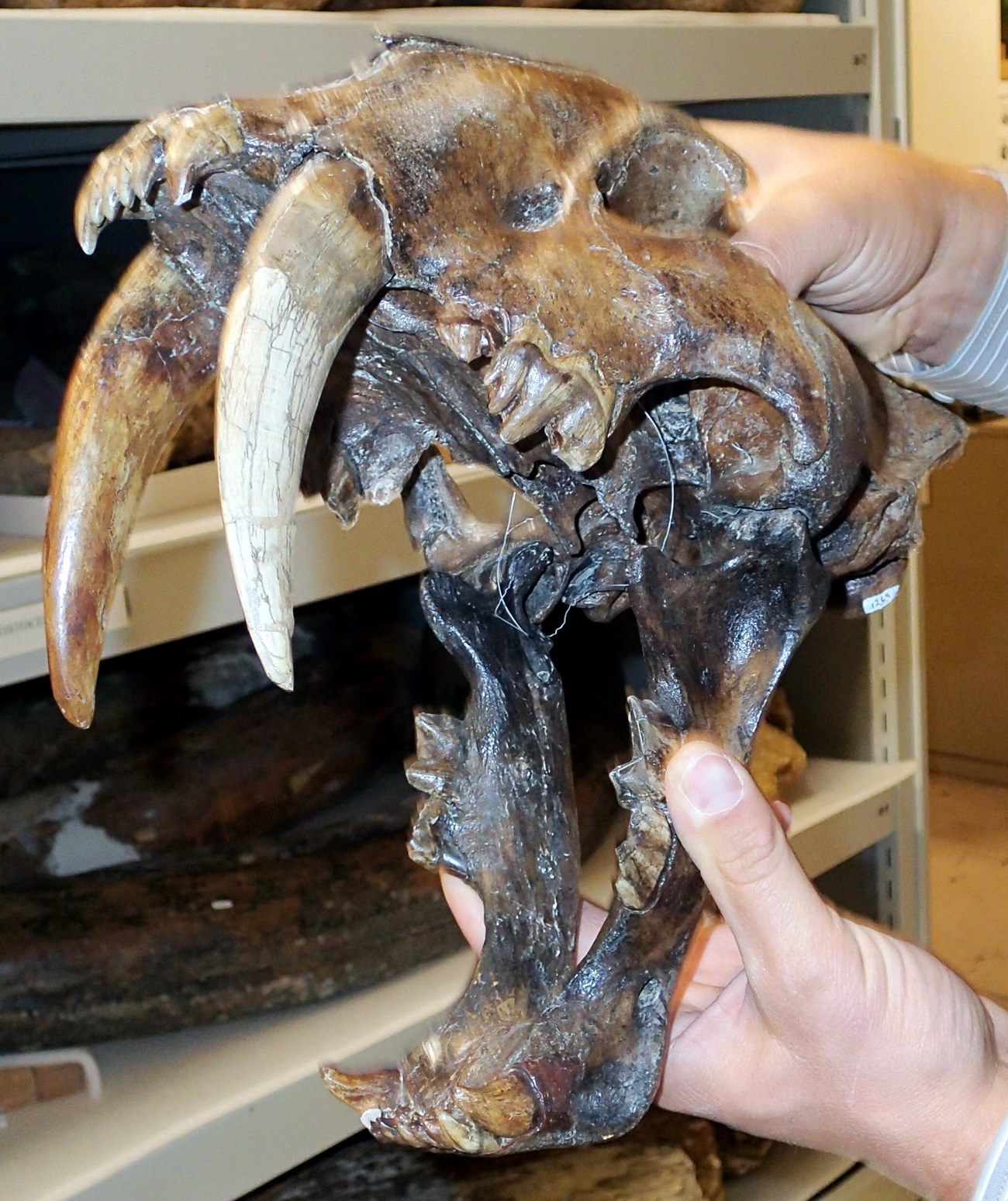
Photo by James St. John.
A wide diversity of fossils have been recovered from the site, which is both a conservation and concentration Lagerstätte. Species include saber-toothed cats, American lions, dire wolves, short-faced bears, Columbian mammoths, ground sloths, bison, birds, a host of smaller vertebrates, invertebrates, and plants. More than 3.5 million fossil specimens have been recovered from the site to date.
Learn More
Featured Parks
-
Agate Fossil Beds National Monument (AGFO), Nebraska—[AGFO Geodiversity Atlas] [AGFO Park Home] [AGFO npshistory.com]
-
Dinosaur National Monument (DINO), Colorado and Utah—[DINO Geodiversity Atlas] [DINO Park Home] [DINO npshistory.com]
-
Florissant Fossil Beds National Monument (FLFO), Colorado—[FLFO Geodiversity Atlas] [FLFO Park Home] [FLFO npshistory.com]
-
Fossil Butte National Monument (FOBU), Wyoming—[FOBU Geodiversity Atlas] [FOBU Park Home] [FOBU npshistory.com]
-
Glacier National Park (GLAC), Montana—[GLAC Geodiversity Atlas] [GLAC Park Home] [GLAC npshistory.com]
-
Hagerman Fossil Beds National Monument (HAFO), Idaho—[HAFO Geodiversity Atlas] [HAFO Park Home] [HAFO npshistory.com]
-
John Day Fossil Beds National Monument (JODA), Oregon—[JODA Geodiversity Atlas] [JODA Park Home] [JODA Npshistory.com]
-
Waco Mammoth National Monument (WACO), Texas—[WACO Geodiversity Atlas] [WACO Park Home] [WACO npshistory.com]
